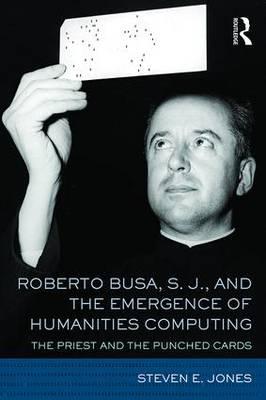Blog di Luigi Alfonso Viazzo aggiornato e completo @
http://luigialfonsoviazzo.altervista.org
L’ultimo progetto di Padre Busa era legato alla ricerca di un nuovo metodo per la traduzione automatica da una lingua all’altra. Per trasformare in realtà ciò che, nella finzione cinematografica, abbiamo visto tante volte, per esempio, nei film e telefilm di Star Trek (chi non ricorda il Capitano Kirk che, grazie a un semplice click, iniziava a comunicare con tutti gli alieni della galassia?).
Anche se il “gesuita scienziato” era comunque rimasto sempre un sacerdote. Soleva infatti dire: “Una mente che sappia scrivere i programmi è certamente intelligente. Ma una mente che sappia scrivere programmi i quali ne scrivano altri si situa a un livello superiore di intelligenza. Il cosmo non è che un gigantesco computer. Il programmatore ne è anche l’autore e il produttore”. (fine)
English version
The last project of Father Busa was related to the search for a new method for automatic translation from one language to another. To turn into reality what, in film fiction, we have seen many times, for example, in the films and TV series of Star Trek (who does not remember Captain Kirk who, thanks to a simple click, began to communicate with all the aliens in the galaxy ?).
And to preserve his work and memory on Facebook there is the group “Father Roberto Busa S.J.” where researchers and teachers of universities of various disciplines testify to the importance and diffusion of the work of the Jesuit.
His studies, beyond the language tours, had very positive influences also on the Italian idiom; thanks to his research and intuitions, in fact, the Accademia della Crusca has indeed been able to digitize the texts of Italian literature.
And his vision of the cosmos was also a “mix” between faith and information technology, a sort of “mega hypertext”.
Even though the “Jesuit scientist” had always remained a priest. He used to say: “A mind that knows how to write programs is certainly intelligent. But a mind that knows how to write programs that write others is situated at a higher level of intelligence. The cosmos is but a giant computer. The programmer is also the author and the producer “. (the end)
Il video de l’Infanzia di San Tommaso d’Aquino…
Traduzione in latinorun per gioco (by Google Translator)
Ultima ex Patre projecti Busa latae sententiae fuerat ad investigationem de novo per modum lingua translationem ab uno ad alium. Ut et vera quod in fictis filmis, vidimus plures temporibus, exempli gratia, in movies et Star Trek TV series (recordabor Capitanus Kirk, qui gratias sit simplex click, coepit cum omnibus alienigenis in galaxia ?).
Et serva, et memoria in opere De Facebook est in “Patri Roberto Busa S.J.” coetus a studiis generalibus in quibus Inquisitores professoresque linguæ Latinæ variis disciplinis demonstrabo momenti est et in vulgus efferenda laboris Jesuitorum.
Studiis eu quam linguae, et plurimum de idioma Italico effectibus; gratias ad investigationis resque maioris momenti quidem sunt quaerere, quae quidem potest esse digitize texts ex Italico litterae.
In mundo erat, et ex his vision, “misce” inter fidem et computatrum scientia, quaedam “Mega hypertextum”.
Licet “peritus Jesuita” sacerdos et semper erat. Et illud dicere solebat: “A animi ut sciat quomodo scribere certe programs callidus est. Sed qui novit quid in mentem scribere scribere quaestionibus, quae sunt alia a superiore gradu intelligentia est. Nihil est mundum, sed a gigas computer. Programmatores quod sit eius auctor et producentis. ” (Finis)



























